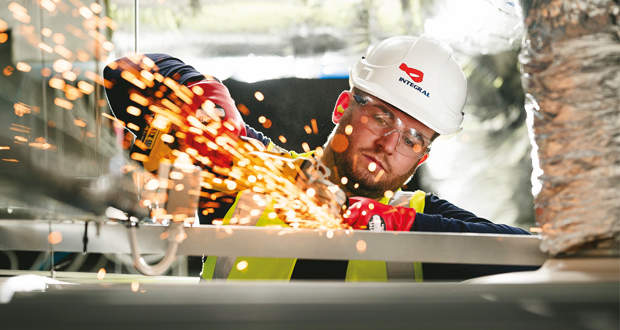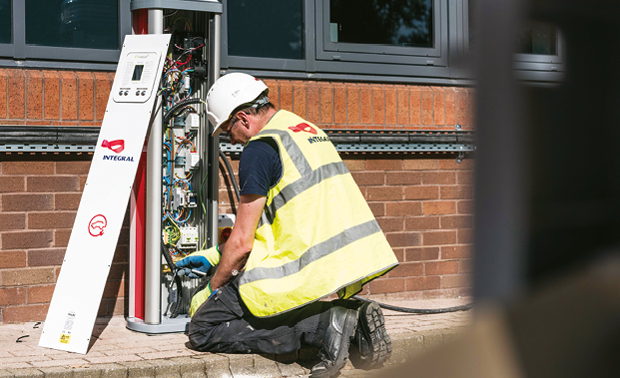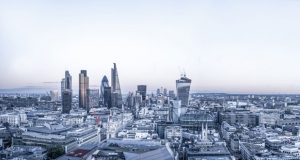 The latest green buildings may be designed for sustainability, but the embodied carbon produced in their construction shouldn’t be overlooked. Shane Betts, Head of Corporate Business, Integral makes the case for retrofitting existing buildings instead
The latest green buildings may be designed for sustainability, but the embodied carbon produced in their construction shouldn’t be overlooked. Shane Betts, Head of Corporate Business, Integral makes the case for retrofitting existing buildings instead
When we think about sustainable buildings, we tend to picture state-of-the-art new ones replete with all the latest technology and automation. But if those of us invested in creating a greener built environment that plays its part in reducing global CO2 emissions, we’ll need to think a lot more about older buildings too.
The reality is, as JLL has discovered, 80 per cent of buildings standing in the Northern Hemisphere today will still be up in 2050, the year the Paris Agreement marked for its net zero target. According to the United Nation’s Intergovernmental Panel on Climate Change, miss this deadline and environmental disaster is unavoidable.
In this sense, building new is also counterintuitive. New builds may save significant levels of operational carbon — all the CO2 emitted during the use, management and maintenance of a structure, including all the assets and services within it, but the embodied carbon they produce — all the CO2 used to design, construct, maintain and dispose of the building — dwarfs those savings. Here, it’s important to consider the sourcing, transportation and application of all the materials used across the supply chain to develop a new, “energy-efficient” building.
What’s more, it’s estimated that operational carbon currently contributes around 28 per cent of global greenhouse gas emissions. All this means that any efforts to decarbonise the built environment must prioritise the buildings we already have.
The challenge is that most existing buildings are not “green”. They are carbon-eating monsters built in a different time and would fail to meet the increasingly stringent regulations set with net zero in mind. From 1 April, changes to the Minimum Energy Efficiency Standards (MEES) have made it illegal for commercial buildings with an Energy Performance Certificate (EPC) rating under E to be let. The bad news, as business advisory firm RSM UK found in late 2022, is that nearly one-fifth of UK landlords still had commercial properties with an EPC of F or G just months before the new regulations kicked in.
ENTER RETROFITTING
So, how do we bring existing buildings up to standard? The solution is retrofitting, the process of adding new technology and components to older assets or systems.
As well as an essential means to decarbonise, retrofitting can help transform buildings into smart spaces that serve multiple purposes in the most efficient way possible. For occupiers, it can help increase comfort, wellbeing and even employee productivity by upgrading systems such as heating and cooling and improving indoor air quality and temperature control, which is increasingly crucial as organisations redesign their workplace models in response to changing demand. For owners, it can increase property value by modernising the asset and all the systems. In JLL’s 2022 Future of Work Survey, nearly two-thirds of organisations said they would be willing to pay a premium for leasing a building with leading sustainability credentials.
Undoubtedly, however, the core benefit of retrofitting for owners, operators and occupiers alike is its ability to make buildings more sustainable and energy efficient. To understand how it does so, we need to split retrofits into three principal stages.
The first is a “light retrofit” where the focus is on performance optimisation and remodelling, replacing, or adapting existing single building elements, such as LED fittings, BMS, and distribution networks. Secondly, there are “deep retrofits on MEP equipment” where fundamental changes take place to ventilation and heating and cooling systems, such as moving to renewable energy sources. Thirdly, there are “deep retrofits on the whole building” that result in fundamental changes to the building structure or services where there is also a behavioural component in helping tenants reduce their specific carbon emissions.
DATA IS EVERYTHING
Retrofitting must be viewed as a journey. Although the investment needed to perform deep retrofits is high, the initial performance optimisation is not only critical but can also present some quick wins.
Central to this is data. As recent IBM research revealed, more than three-quarters of global business leaders plan to prioritise or invest in technology in 2023. Among the top reasons for this focus included “plans to invest in infrastructure… and make their entire business more sustainable and resilient”.
That sounds promising. However, as an organisation that has performed hundreds of net zero carbon audits, we often come across the same issue: a lack of data, in terms of both volume and quality, to properly measure building performance and inform strategic decisions on how to better decarbonise.
Once sensors are fitted to assets which feed information to an intelligent analytics platform, facilities managers can review the asset condition and lifecycle data. This can help determine the energy use intensity — EUI for short — of a building, providing a baseline for future improvements and maximising low-cost or no-cost operational efficiencies. Vibration sensors enable users to look at the system’s health and potentially replace components rather than whole systems.
The first phase of a retrofit should include quick wins such as swapping out halogen lighting for LED. These wins then need constant review and calibration. For example, room occupancy, temperature and lighting data can combine to paint a clear picture of when, where and for how long lighting and heating systems need to be switched on in a particular space or room. This picture is presented via BIM or BMS interfaces to facilities managers, who can use the information to make optimised decisions. Once these data-driven fundamentals are in place, retrofit strategies can start to enter more ambitious phases such as the integration of renewable power sources and more complex building engineering changes.
HOW BIG IS THE CHALLENGE?
Retrofitting is happening but not at the scale needed. According to JLL research, retrofitting rates in the northern hemisphere must triple from one per cent to at least three per cent of existing buildings per year if the built environment is to help meet net zero targets. This will require heavy investment, overcoming the engineering skills shortage, upskilling the workforce, navigating a messy disjointed global regulatory environment, and industry-wide collaboration.
However, the need to retrofit is just too important. The built environment and all its stakeholders, including facilities management companies, have a critical role to play in reducing carbon emissions and helping businesses, governments and regions in reaching net zero. The world depends on it.






